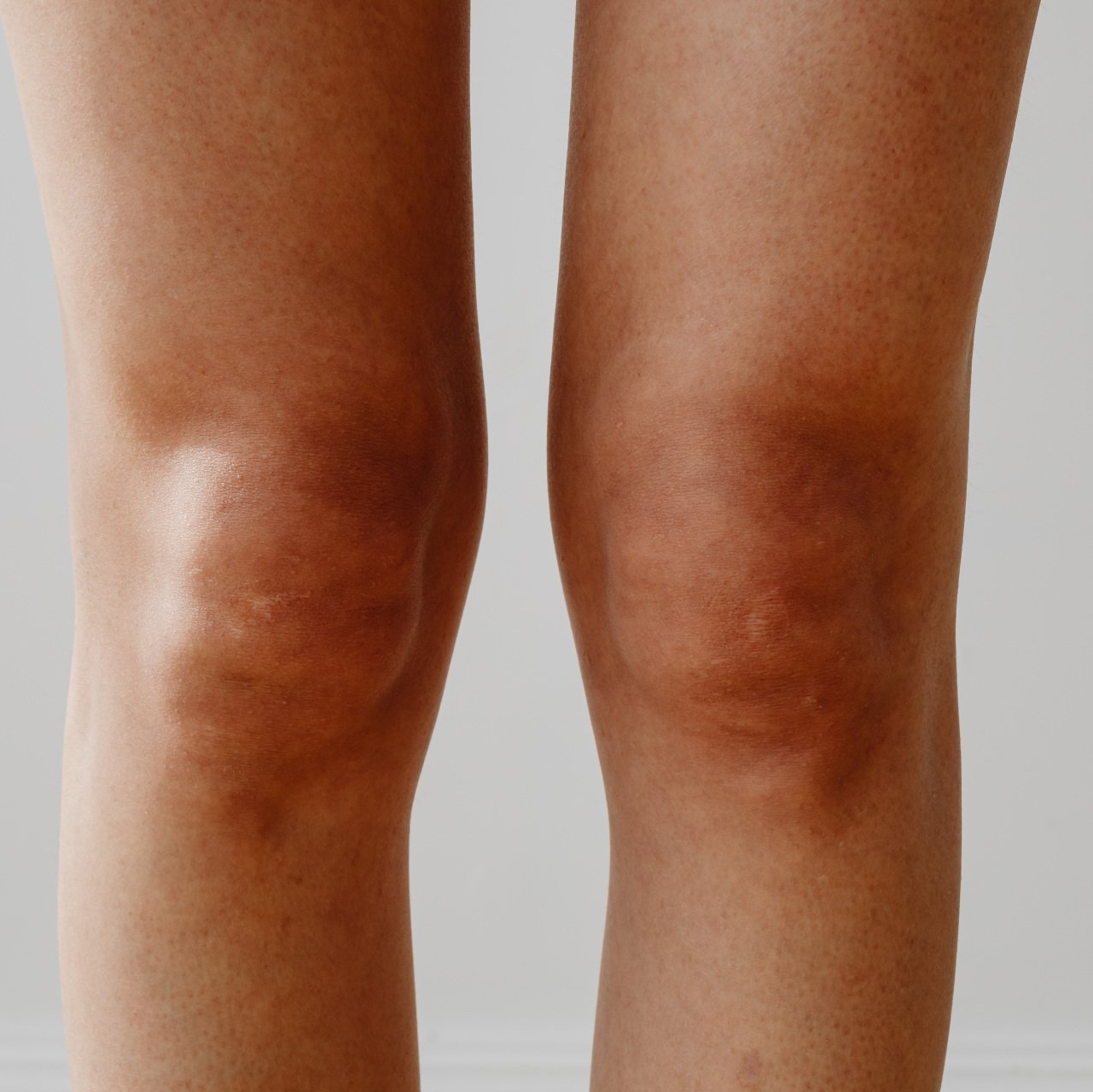Blog Layout
Blog
What exactly is sciatica and how is it different from lower back pain?
I frequently have patients claim that they have "sciatica". Sciatica is widely misunderstood.
3 Common Myths About Sciatica
Here are three things we often hear people say about sciatica:
1. "This kind of thing just happens when you get older".
False. Sciatica can affect anyone. Although it is very rare in children and is most commonly seen in people over the age of forty, when it comes to whether or not you will end up with either lower back pain or sciatica, it matters far more how long you have had big misalignments than how long you've been alive. Misalignment and the miles you have put on with your wheels pointed in the wrong direction are the key issues.
2. "People who sit all day get sciatica".
Not necessarily. The irony behind this statement is that historically occupations that require lifting and carrying heavy loads have been widely cited as being related to a higher incidence of both lower back pain and sciatica, but in the past few years, there is less acceptance of such a connection. I would again play the alignment card; whether you are sitting all day, standing all day, or carrying one hundred pound bags of cement all day, if you have a crooked pelvis, your back is going to be a problem. Your body will do what it believes is necessary to splint and protect itself. It's "go-to" strategy is muscle spasm. Sciatica is a relatively common pain problem that occurs due to exactly this kind of splinting/protecting.
3. "This happened because I let myself get out of shape" (sometimes they emphasize weight gain and sometimes they emphasize "physical fitness").
Not likely. While extra pounds added to compromised posture are not helpful, they are also unlikely to be the source of your sciatic symptoms. They have simply added fuel to the fire. Muscle imbalances that are responsible for dysfunctional postures typically develop over years, often decades, and your current fitness level is at most a contributing factor, not a cause of your sciatica.
Sciatica: What We Know
Sciatica is essentially pain that starts in the lower back or buttock area and radiates down the leg. The pain is usually behind the leg and can go all the way to the foot. Like most pain problems, there is a wide range of intensities, but people with sciatica often describe having intense pain, numbness or a tingling sensation along the back of the leg.
The sciatic nerve is the largest peripheral nerve in the body. It exits the pelvis in the buttock area and runs down the back of the thigh. Just above the knee, the sciatic nerve divides into several branches, with some extending down into the foot. Sciatica refers to a set of symptoms that arise when the sciatic nerve is irritated or compressed.
What are symptoms of sciatica?
When the sciatic nerve is compressed or pinched it typically sends painful impulses down the back of the leg. Although it typically occurs only on one side of the body it is also usually quite painful and is sometimes disabling. While some people experience one acute episode, others suffer from recurring attacks of sciatica.
What are common causes of sciatica?
There are several causes of sciatica. There can be pressure on one of the nerve roots which blend together to form the sciatic nerve. These nerve roots can be pressed on by a bulging or herniated disc, or by unwanted bony formations at the spine. Another common cause is when the piriformis muscle in the buttock tightens excessively. This is called Piriformis Syndrome. The sciatic nerve and the piriformis muscle exit from the inside to the outside of the pelvis through the same notch, so are very related. It is said that approximately 10-11 percent of people have the sciatic nerve passing through, not beside, the piriformis. If you are one of the "lucky" ones to have this anatomical characteristic, you are certainly more prone to this version of sciatica than the average person.
The discs in the spine act as shock absorbers
and provide space for the nerves to exit the spine. However, the nerve roots exiting the spine can be pressed on by either bulging or herniated discs. If there is sufficient compression of the disc, it is simply squeezed outward from between the vertebrae, like the gooey center of an Oreo cookie.
Sometimes the discs are damaged during acute injury or deteriorate due to decades of dysfunctional pressures. A herniation occurs when the outer wall of the disc gives way and allows the jelly-like interior material to leak out. This disc material can come in contact with a nerve root that is part of the source of the sciatic nerve and cause pain. Besides spinal discs, there are other causes of sciatica which include the following:
- Spinal stenosis is a medical disorder where an area of the spinal column has become narrow, leaving less room for both the spinal cord and the nerves that exit the spinal column. The narrowing typically occurs in the lower part of the spinal canal.
- Vertebral slippage is also known as spondylolisthesis. Ideally, each vertebra is perfectly aligned with the vertebrae above and below. For a wide variety of reasons, this "neutral alignment" can be lost. If a vertebra shifts forward or backward relative to the one below it, the spaces for the nerve roots to exit through the spine become smaller, often resulting in nerves being compressed.
- Tumors can also occur inside or on the spinal column and compress nerves.
Acute injury from an incredibly wide range of accidents can result in sciatica. Motor vehicle accidents are a relatively common cause, but anything that can cause acute muscle spasms in your lower back and/or buttocks is a candidate. Injury to the sciatic nerve can also occur from an injection into the buttock. Intramuscular injections are commonly administered in hospitals and if the injection is placed in exactly "the wrong place", the sciatic nerve can be injured. It happens.
How is diagnosis of sciatica made?
To make the diagnosis of sciatica, any primary care provider (medical doctor, chiropractor or physical therapist) will obtain a medical history and perform a physical exam. A neurological scan exam is done to determine the location of the "primary lesion". In some cases, a CT scan or an MRI will be necessary to isolate the exact cause and location of the symptoms. In complex cases a nerve conduction study from a neurologist may be necessary to determine where the location of the nerve problem is.
How is sciatica treated?
Most physicians will initially recommend conservative treatments for sciatica. Although few days of rest and prescription pain pills will sometimes decrease the acute nature of the symptoms, it is almost never results in lasting relief. If conservative care doesn't result in a solution your physician is likely to want to talk about:
Steroid
injections
into the back. Epidural steroid injections are often used to relieve inflammation and pain. There is some evidence that such steroids can relieve inflammation but pain relief is not consistent and probably more importantly, such steroids cannot be injected for long periods because of their side-effects.
There are some people who advocate laser ablation
for back pain. At the time of this writing there is a lack of research support for this approach but anecdotal reports indicate that some people do obtain temporary pain relief.
Surgery
is only considered after other conservative treatment plans have failed. It is usually reserved for individuals who have nerve compression associated with other problems like bowel or bladder incontinence. There are several types of surgical procedures linked to sciatica, the three most common being lumbar fusion, discectomy, and laminectomy. In a spinal fusion two adjacent vertebrae are fused together to eliminate movement between them. In a discectomy all or part of the disc that is compressing the nerve is removed. In a laminectomy part of the vertebra is cut away to remove pressure on a nerve root. However, before you decide to undergo surgery, you must weigh the pros and cons. Spine surgery is not without complications and many people end up worse than before.
At Alignment First
we use a wide variety of assessments to identify the source of your sciatica. Once we understand the nature of your sciatica we can then use our proprietary Alignment First Protocol to re-educate your body out of pain-producing postures. Sciatica should not be a source of worry; it can be solved by releasing the dysfunctional stresses. The Alignment First Protocol results in a postural makeover that moves you, step-by-step, toward being pain-free. For over thirty years this approach has proven to be an effective way to solve sciatica.
At Alignment First
our expertise is ALIGNMENT. Our approach is built upon discovering the root cause of your symptoms and then developing a therapeutic plan based on those assessment findings, your personal goals, AND your lifestyle. If you haven't had any success solving YOUR sciatica and are not excited to try any of the approaches listed above, call us today and see if you are a good fit for the Alignment First Protocol.

By Geoff Dakin
•
April 4, 2022
"Most people who have chronic or recurring knee pain have a hip/pelvis alignment problem, a foot/ankle problem, or both." First-principles thinking involves breaking down a problem into its assumption-free, fundamental building blocks. In the chronic pain-elimination game, the following fundamental truths have served me well over the years: 1. The nervous system is paramount. 2. Malalignment of the skeleton adds stress to the neuromuscular system. 3. Postural malalignment can usually be reduced with the practice of appropriately prescribed corrective exercise.

By Geoff Dakin
•
March 28, 2022
I have found that most people will stretch as aggressively as their pain threshold will allow. However, there is this thing called the “Stretch Reflex.” In other words, stretch too hard and all you are doing is making yourself sore! All pain, no gain. Stretching "the wrong muscles"??? I can hear the gears turning in your head. "The wrong muscles" doesn't make any sense!

By Geoff Dakin
•
March 21, 2022
Although chronic back pain is the most common chronic pain problem worldwide, of course, it's not the only one. In my practice, I also help people struggling with foot pain, hip pain, shoulder pain, and many others!
In fact, today I want to share with you my perspective on KNEE PAIN, one of the most common problems I'm asked about.

By Geoff Dakin
•
March 7, 2022
“Impossible” is usually an opinion, not a fact. Although you may’ve taken a very long and winding road to get relief from chronic pain, and you’ve probably even had experiences that suggest that solving your pain problems are “impossible” If you come to the clinic or work with me using video conferencing I can guide you through your rehab training even faster and easier!

By Geoff Dakin
•
February 27, 2022
This morning I got thinking about something a patient said. She has felt “heard” and she is no longer fearful that she will be “forced to do things that cause undo pain". I put a lot of time, effort, and yes, thought, into making sure you’re getting the care your body needs, not what some system says you SHOULD need.

By Geoff Dakin
•
February 18, 2022
I continue to see chronic pain problems being mismanaged and misunderstood. Or better said, mismanaged because they are misunderstood. Is it any wonder that people aren’t getting the help they need and instead end up relying on painkillers and surgeries to “solve” their problems?

By Geoff Dakin
•
August 26, 2021
With people living longer than ever before, more and more individuals find themselves sandwiched between caring for their children and caring for their aging parents. You may experience feelings of grief and loss, as you see your parents changing and the roles of your family shifting. You may also feel fearful and anxious about your parent’s mortality, and that gets you thinking about your own.

By Geoff Dakin
•
June 23, 2021
The body holds much of the information we need to function at our best, but too often we ignore its messages and plow ahead with what our minds tell us. Instead of asking our body what it wants, we go for the quick fill-up or the comfort food that may be the last thing we really need. So, what to do to give your body an equal say in how you use it?

By Geoff Dakin
•
May 25, 2021
In challenging times such as these, taking care of ourselves is more important than ever—yet it’s often the last thing on our minds. We all know the negative impact on our health that stress can have—so, let’s find some balance. Take this self-quiz to see how well you are taking care of yourself.

